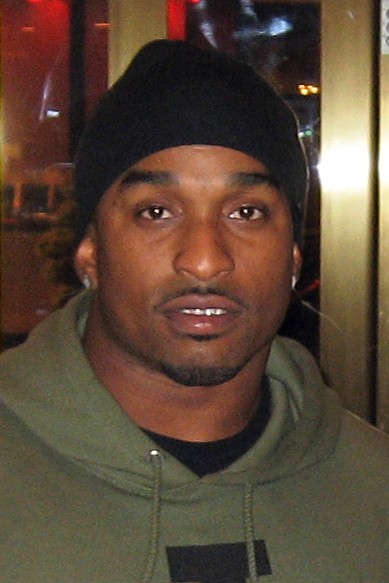December 1 2012
Post on: 21 Август, 2015 No Comment

By David | Published: December 1, 2012
December 1, 2012 Contents
Dear friends,
And now, we wait. After the frenzy of recent months, that seems odd and unnatural.
Will and his minions wait for the holidays, anxious for the last few weeks of school to pass but secure in the knowledge that their folks are dutifully keeping the retail economy afloat.
Photo by Drew Barnes 14, Augustana Photo Bureau
My colleagues at Augustana are waiting for winter and then for spring. The seemingly endless string of warm, dry weeks has left much of our fall foliage intact as we enter December. As beautiful as it is, we’re sort of rooting for winter, or at least the hope of seasonal weather, to reassert itself. And we’re waiting for spring, when the $13 million renovation of Old Main will be complete and we escape our warren of temporary offices and ersatz classrooms. I’ve toured the half-complete renovation. It’s going to be so cool.
And investors wait. Most of us are waiting for a resolution of “the fiscal cliff” (alternately: fiscal slope, obstacle course, whatchamacallit or, my favorite, Fiscal Clifford the Big Red Dog), half fearful that they won’t find a compromise and half fearful that they will.
Then there are The Two Who Wouldn’t Wait. And they worry me. A lot. We’ve written for a year or so about our concerns that the bond market is increasingly unstable. That concern has driven our search for tools, other than Treasuries or a bond aggregate, that investors might use to manage volatility. In the past month, the urgency of that search has been highlighted by The Two. One of The Two is Jeffrey Gundlach, founder of the DoubleLine funds and widely acknowledged as one of the best fixed-income managers anyway. Gundlach believes that “[d]eeply indebted countries and companies, which Gundlach doesn’t name, will default sometime after 2013” (Bond Investor Gundlach Buys Stocks, Sees Kaboom Ahead. 11/30/2012). Gundlach says, “I don’t believe you’re going to get some sort of an early warning. You should be moving now.” Gundlach, apparently, is moving into fine art.
GMO, the other of The Two, has moved. GMO (Grantham, Mayo, van Otterloo) has an outstanding record for anticipating asset class crashes. They moved decisively in 2000 and again in 2007, knowing that they were likely early and knowing that leaving the party early would cost them billions (one quarter of the firm’s assets) as angry investors left. But when the evidence says “run,” they ran. In a late-November interview with the Financial Times. GMO’s head of asset allocation revealed that, firm-wide, GMO had sold off all of their bond holdings (GMO abandons bond market. 11/26/2012). “We’ve largely given up on traditional fixed income,” Inker says, including government and corporate debt in the same condemnation. They don’t have any great alternatives (high quality US stocks are about the best option), but would prefer to keep billions in cash to the alternatives.
I don’t know whether you should wait. But I do believe that you should acquaint yourself with those who didn’t.
The Last Ten: PIMCO in the Past Decade
In October we launched “The Last Ten,” a monthly series, running between now and February, looking at the strategies and funds launched by the Big Five fund companies (Fido, Vanguard, T Rowe, American and PIMCO) in the last decade.
Here are our findings so far:
Fidelity. once fabled for the predictable success of its new fund launches, has created no compelling new investment option and only one retail fund that has earned Morningstar’s five-star designation, Fidelity International Growth (FIGFX). We suggested three causes: the need to grow assets, a cautious culture and a firm that’s too big to risk innovative funds.

T. Rowe Price continues to deliver on its promises. Of the 22 funds launched, only Strategic Income (PRSNX) has been a consistent laggard; it has trailed its peer group in four consecutive years but trailed disastrously only once (2009). Investing with Price is the equivalent of putting a strong singles-hitter on a baseball team; it’s a bet that you’ll win with consistency and effort, rather than the occasional spectacular play.
And just as you’re about to conclude that large fund companies will necessarily produce cautious funds that can aspire just to “pretty good,” along comes PIMCO. PIMCO was once known as an almost purely fixed-income investor. Its flagship PIMCO Total Return Fund has gathered over a quarter trillion dollars in assets and tends to finish in the top 10% of its peer group over most trailing time periods.
But PIMCO has become more. This former separate accounts managers for Pacific Life Insurance Company now declares, “We continue to evolve. Throughout our four decades we have been pioneers and continue to evolve as a provider of investment solutions across all asset classes.”
Indeed they have. PIMCO has spent more time thinking about, and talking about, the global economic future than any firm other, perhaps, than GMO. More than talk about the changing sources of alpha and the changing shape of risk, PIMCO has launched a bunch of unique funds targeting emerging challenges and opportunities that other firms would prefer simply to ignore (or to eventually react to).
Perhaps as a result, PIMCO has created more five-star funds in the last decade than any other firm and, among larger firms, has a greater fraction of their funds earning four- or five-stars than anyone else. Here’s the snapshot:
- PIMCO has 84 funds (which are sold in over 536 packages or share classes)
- 56 of their funds were launched in the past decade
- 61 of them are old enough to have earned Morningstar ratings
- 20 of them have five-star ratings (as of 11/14/12)
- 15 more earned four-star ratings.
How likely this that? In each Morningstar category, the top 10 percent of funds receive five stars, the next 22.5 percent receive four stars, and the next 35 percent receive three. In the table below, those are the “expected values.” If PIMCO had just ordinary skill or luck, you’d expect to see the numbers in the expected values column. But you don’t.














